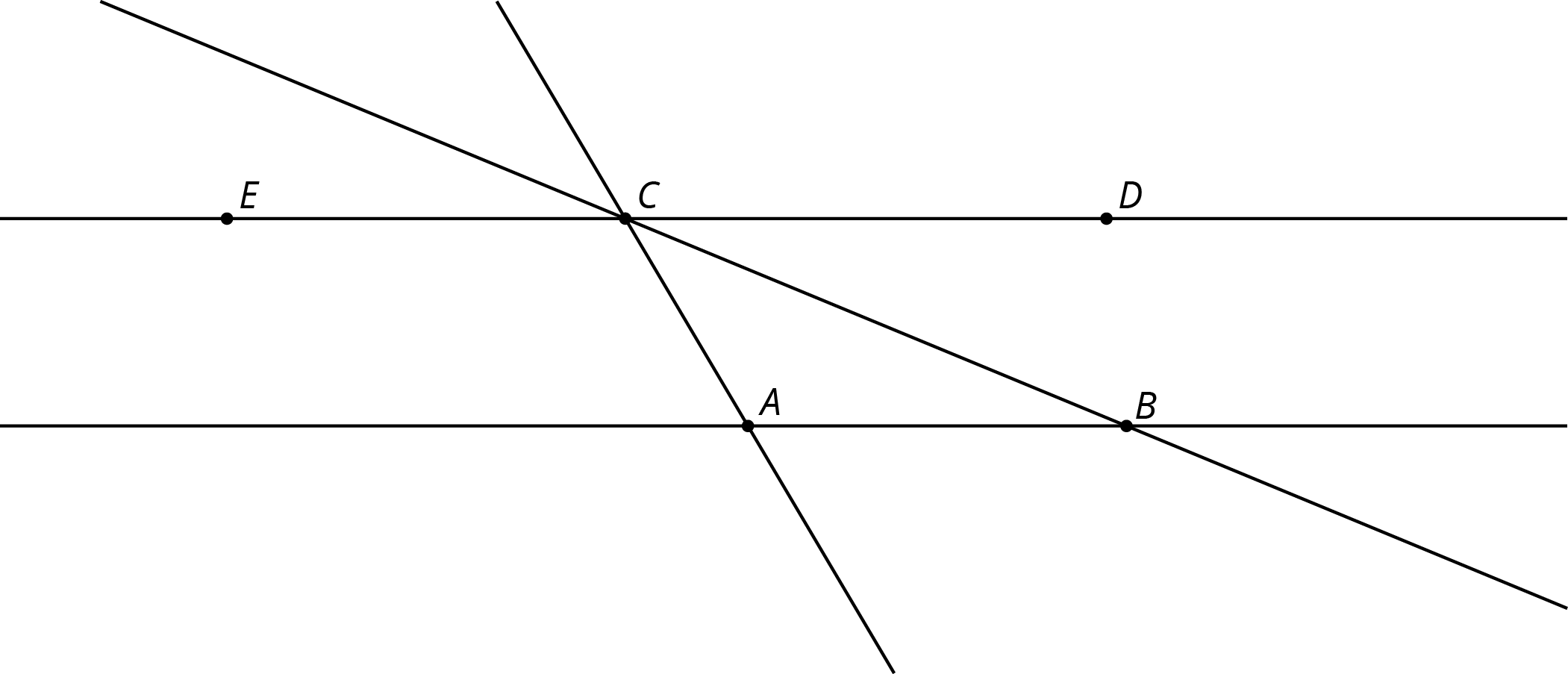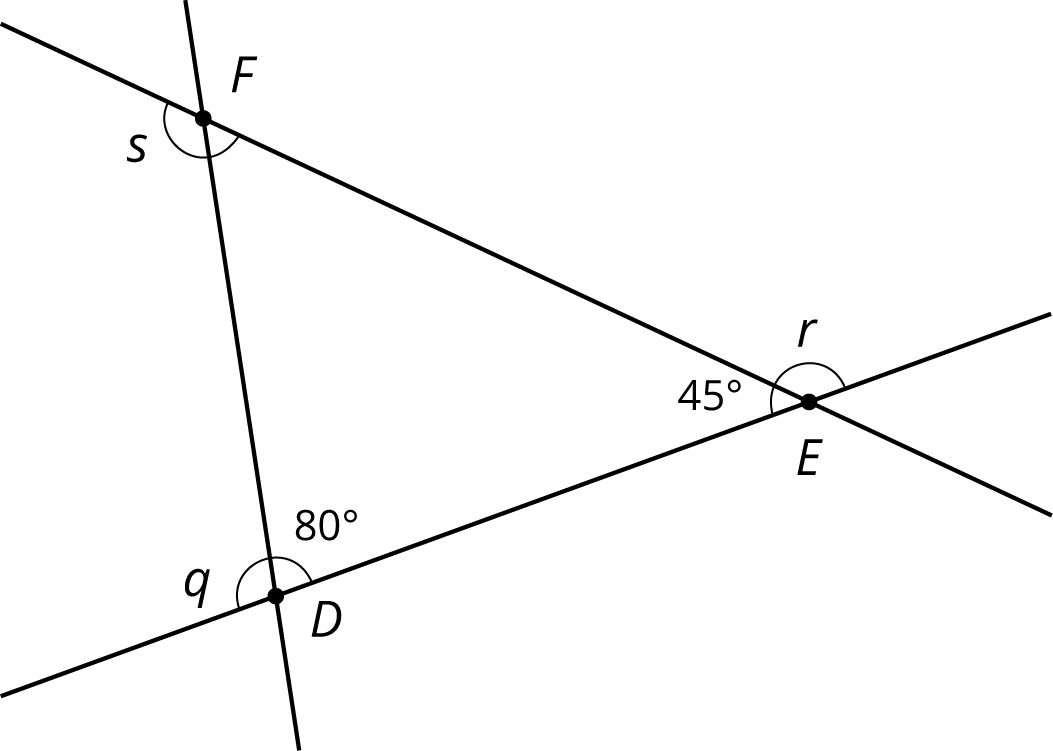Lesson 16
Parallel Lines and the Angles in a Triangle
Let’s see why the angles in a triangle add to 180 degrees.
Problem 1
For each triangle, find the measure of the missing angle.

Problem 2
Is there a triangle with two right angles? Explain your reasoning.
Problem 3
In this diagram, lines \(AB\) and \(CD\) are parallel.

Angle \(ABC\) measures \(35^\circ\) and angle \(BAC\) measures \(115^\circ\).
- What is \(m{\angle ACE}\)?
- What is \(m{\angle DCB}\)?
- What is \(m{\angle ACB}\)?
Problem 4
Here is a diagram of triangle \(DEF\).
- Find the measures of angles \(q\), \(r\), and \(s\).
- Find the sum of the measures of angles \(q\), \(r\), and \(s\).
-
What do you notice about these three angles?

Problem 5
The two figures are congruent.
- Label the points \(A’\), \(B’\) and \(C’\) that correspond to \(A\), \(B\), and \(C\) in the figure on the right.

- If segment \(AB\) measures 2 cm, how long is segment \(A’B’\)? Explain.
- The point \(D\) is shown in addition to \(A\) and \(C\). How can you find the point \(D’\) that corresponds to \(D\)? Explain your reasoning.
